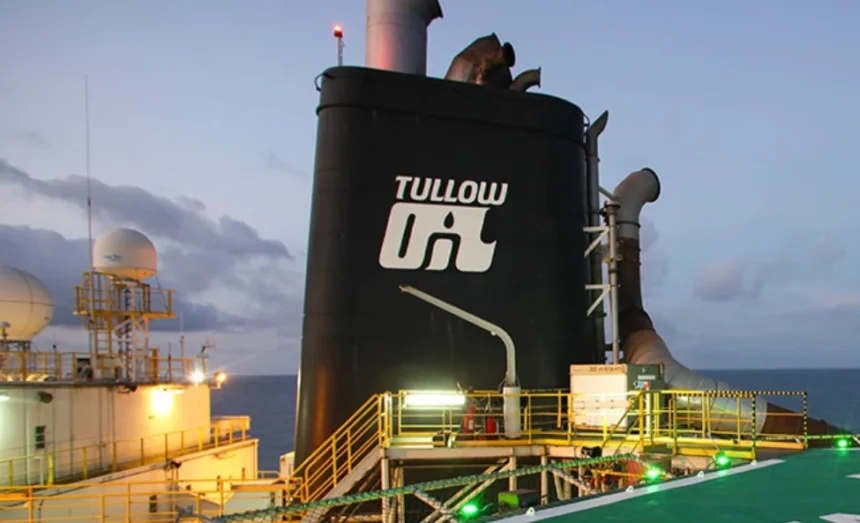Tullow Oil has reduced its net debt, halving its liabilities from approximately c.$2.81 billion to c.$1.45 billion over the past four years, as the company continues to focus on operational efficiency and financial discipline.
Announcing its full-year results for 2024, the London-listed oil and gas company said it had maintained strong free cash flow generation, with revenue of approximately $1.5 billion and free cash flow of $156 million.
Tullow’s gearing has fallen to 1.3 times, and the extension of its $250 million revolving credit facility to mid-2025 has further strengthened its balance sheet.
Chief Executive Officer Rahul Dhir, who is set to step down in 2025, described the year as a period of “continued strong progress” and pointed to an “exciting 2025” with further cost reductions, production optimisation, and an extension of drilling activities at the Jubilee field in Ghana.
“Our improved balance sheet, alongside the extension of our revolving credit facility, positions us well as we look to manage our debt maturities and optimise the Group’s capital structure in 2025,” he said.
Operational and Financial Performance
Tullow’s full-year working interest production averaged 61.2 thousand barrels of oil equivalent per day (kboepd), with its flagship Jubilee field contributing 33.9 kboepd net. The TEN field produced 10.2 kboepd net, while non-operated assets in Gabon and Côte d’Ivoire added 10.6 kboepd.
The Jubilee drilling campaign was completed six months ahead of schedule and without safety incidents, while the FPSO uptime across the Jubilee and TEN fields averaged 97%.
On the financial front, the company maintained discipline, with capital expenditure of $230 million and decommissioning costs of $60 million, both in line with guidance. The successful resolution of a long-standing Ghana Branch Profits Remittance Tax arbitration removed a $320 million contingent liability, reinforcing the company’s contractual stability in the country.
2025 Outlook: Growth and Capital Returns in Sight
Tullow expects working interest production to average between 50 and 55 kboepd in 2025, including gas production of around 6 kboepd. A planned two-week maintenance shutdown at Jubilee in the first half of the year will have a modest 4% impact on annual output.
To support long-term production, the company is undertaking a 4D seismic survey across the Jubilee and TEN fields, which will guide future drilling locations.
Tullow plans to restart drilling in Ghana in May 2025 with the Noble Venturer rig, targeting two new Jubilee wells that are expected to come onstream in the third quarter.
Further efficiency measures are underway, including a cost base optimisation programme that is expected to yield $10 million in annual savings, reducing cash net general and administrative costs to $40 million.
The company is also evaluating potential disposals of non-core assets to accelerate its deleveraging strategy and reduce net debt below $1 billion.
Capital expenditure for 2025 is projected at $250 million, with 60% directed to Jubilee, 30% to non-operated assets, and 10% to TEN, Kenya, and exploration activities.
The company also expects to spend $30 million on decommissioning, split between the UK, Ghana, and Gabon.
Strategic Transition and Leadership Change
With Dhir set to step down, Tullow has begun the search for a new CEO to lead the company into its next phase.
The company is also planning to refinance its debt and streamline its capital structure during 2025.
Management intends to repay its 2025 notes at maturity through a combination of cash reserves and funding from its Glencore facility.
Following the refinancing and leadership transition, Tullow plans to outline a framework for capital returns and explore inorganic growth opportunities across Africa.
The company’s estimated 2C resources of around 700 million barrels of oil equivalent represent a significant opportunity to convert contingent resources into reserves and sustain long-term production.
As the company enters 2025, its focus remains on sustaining operational excellence, improving financial resilience, and positioning itself for renewed growth and shareholder returns.






